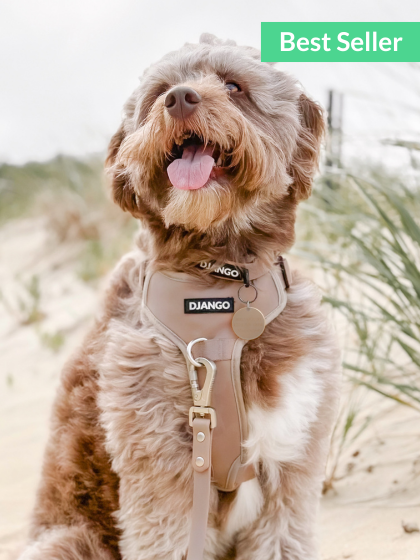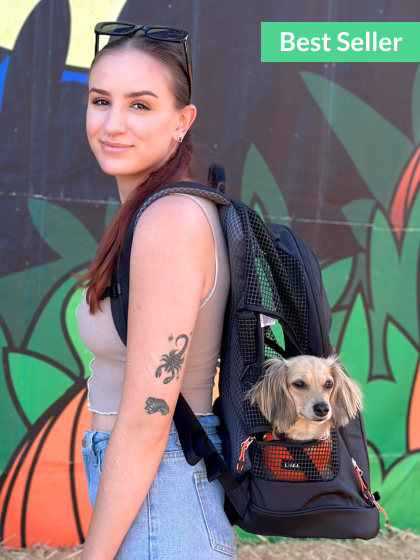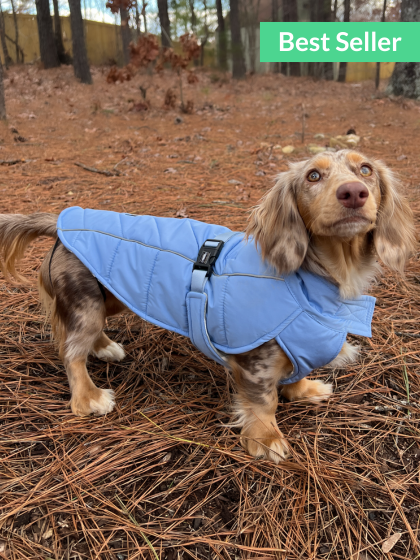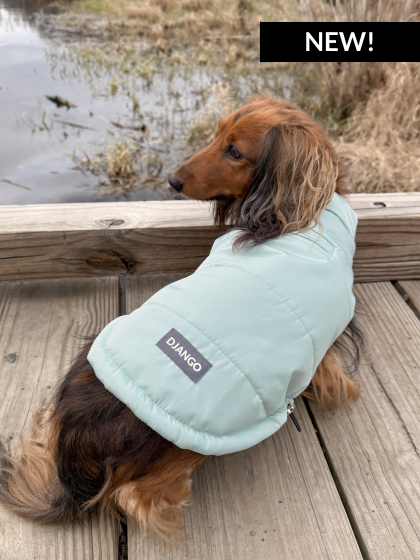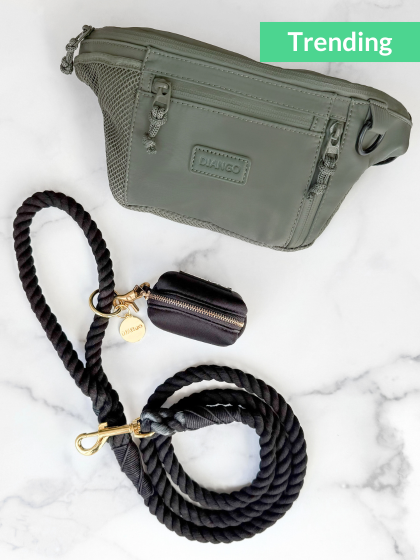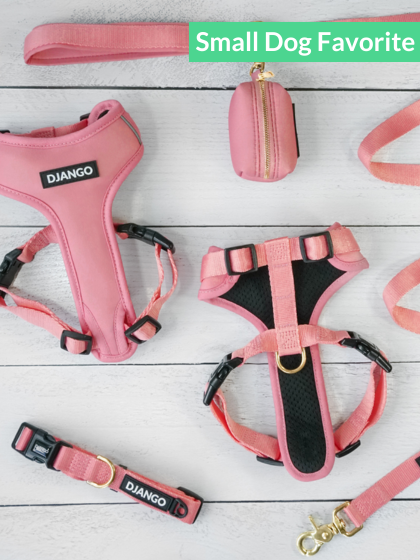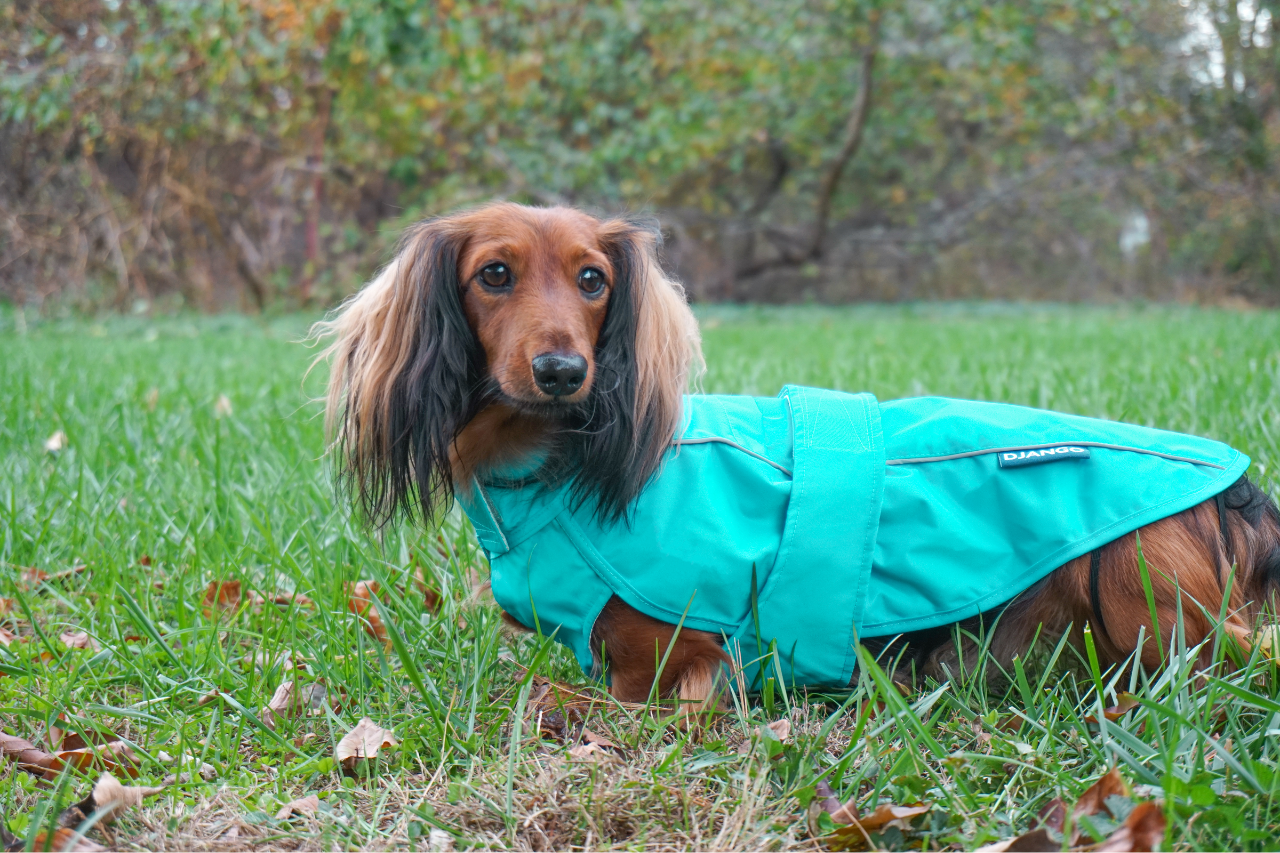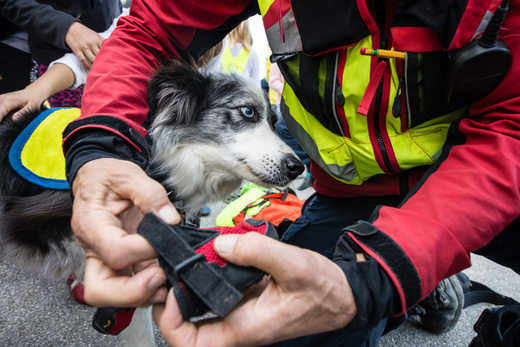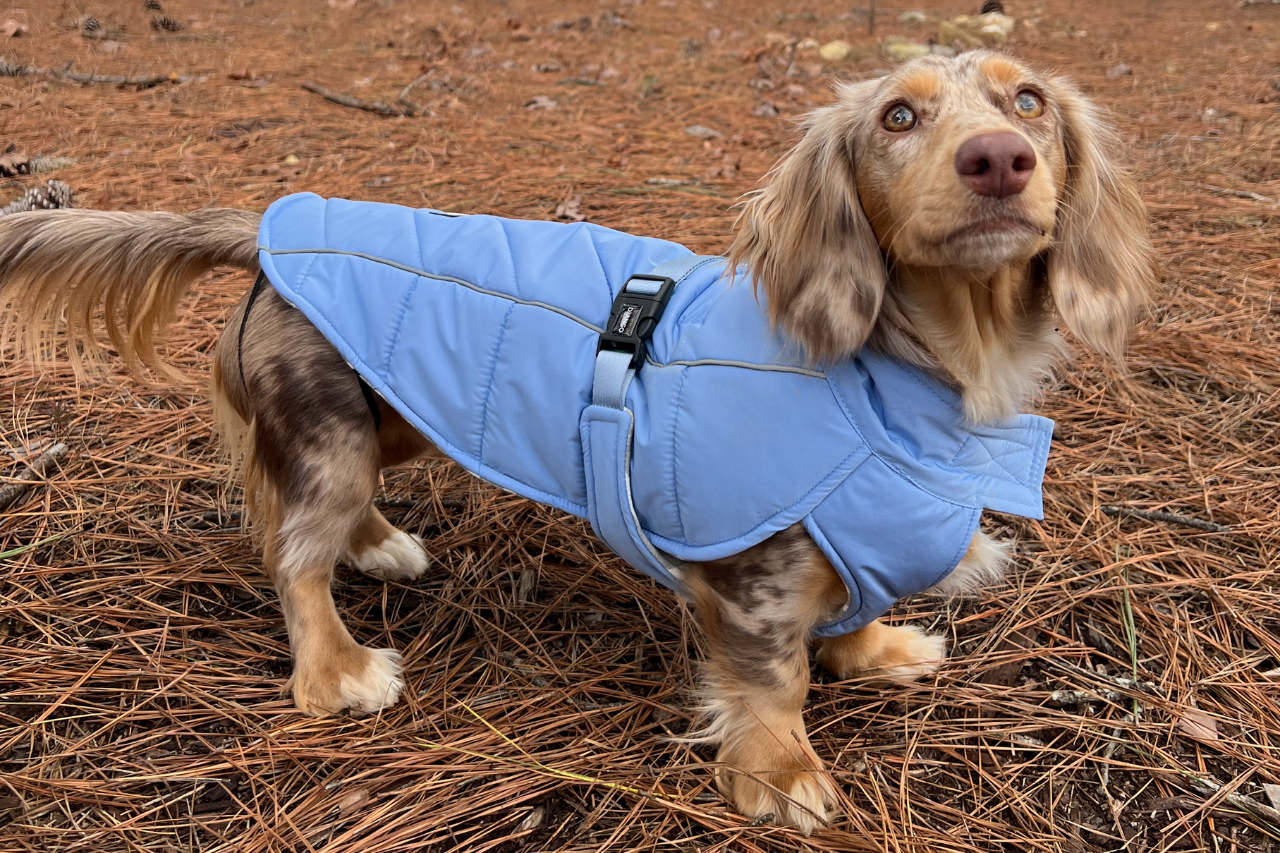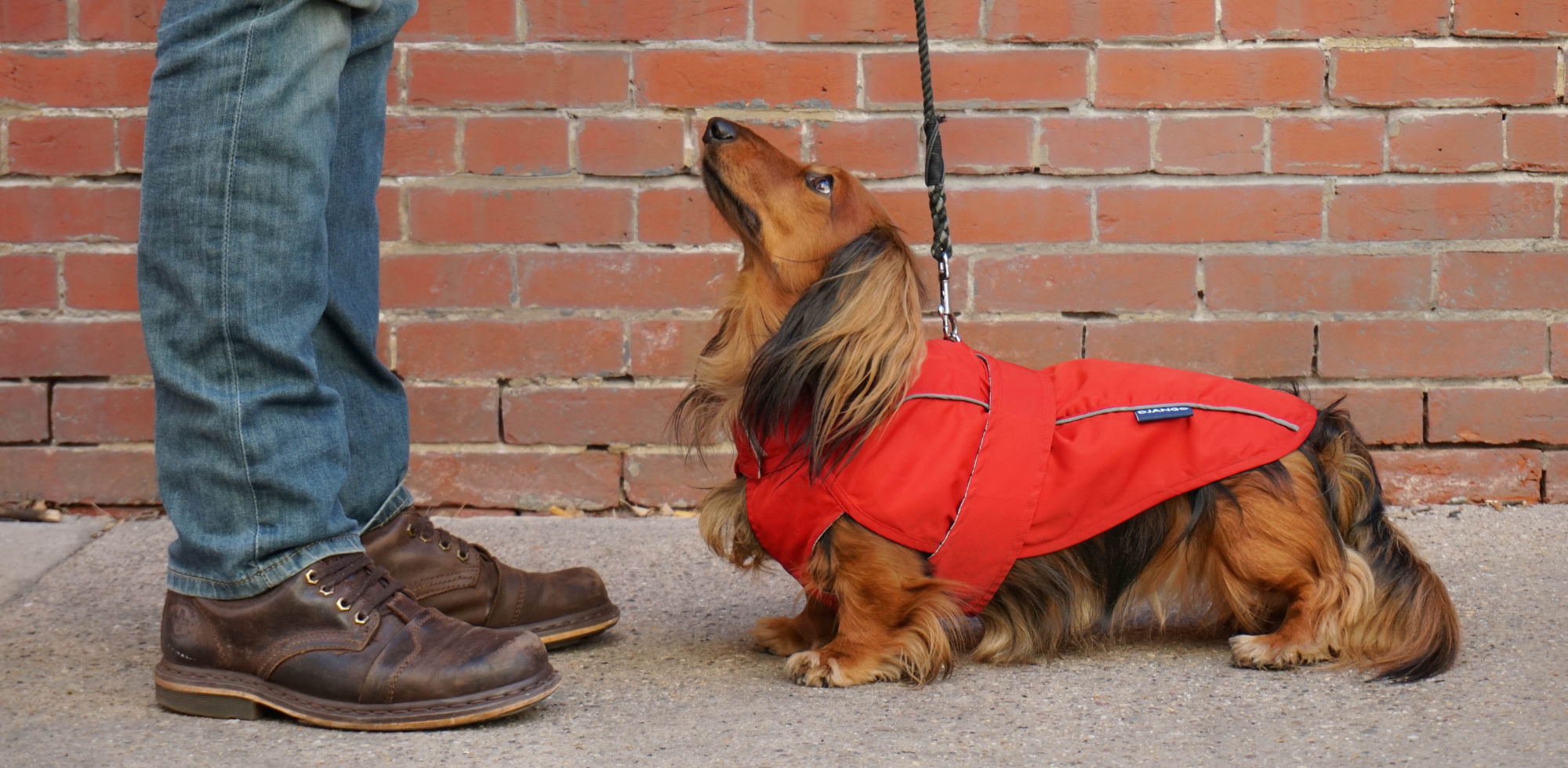As temperatures drop and days grow shorter, we bundle up in cozy sweaters, waterproof jackets, and insulated winter coats to stay warm. But what about our four-legged family members? Do dogs need sweaters and coats during the cold-weather months? What dog breeds need coats in winter?
While some dog breeds are built to handle cold weather, most dogs need protection during winter walks and cold-weather adventures. So, how do you know if your pup needs a winter dog coat or cozy dog hoodie for the winter months?
In this DJANGO Dog Blog article, we discuss which dogs need winter dog coats and cold-weather apparel. We also offer a few examples of durable, comfortable, and high quality winter dog coats that are excellent options for active dogs, puppies, and senior pups.
Below: Gigi, a longhaired miniature dachshund, stays warm in her Whistler Winter Dog Coat during a cold winter outing in New York City. This is one of the most popular and well made insulated winter dog coats, and it comes in a wide-range of sizes for almost all dogs and dog breeds.
What dog breeds should wear coats?
If you are not sure if your dog needs cold-weather apparel, we’re here to help! The following are dogs that need coats in winter and the colder-weather months:
Small Dog Breeds
Small dogs like Chihuahuas, dachshunds, miniature pinschers, and Yorkies feel the cold much more quickly than larger-bodied dogs. This is because their smaller bodies are not able to retain heat as well as their larger four-legged friends.
Insulated winter dog coats and/or warm dog sweaters give small dogs much-needed protection during cold-weather outings. By trapping heat around small dogs' bodies, the apparel allows them to stay warm, comfortable, and enjoy outdoor adventures even in chilly temperatures.
Short-Haired Dog Breeds
Short-haired dog breeds need winter coats and cold-weather apparel because they lack the dense, insulating fur necessary to retain body heat in cold temperatures. Without this natural protection, they are more vulnerable to hypothermia, frostbite, and general discomfort during chilly weather.
Examples of short-haired dog breeds include but are not limited to beagles, Boston terriers, boxers, Chihuahuas, dachshunds, greyhounds, French bulldogs, miniature pinscher, pugs, and Vizslas.
Winter dog coats and sweaters provide an extra layer of warmth, allowing these dogs to stay comfortable and safe during outdoor activities. Additionally, short-haired breeds often have less fat for insulation, making them even more reliant on protective clothing in colder climates.
Dogs Without an Undercoat
Dogs without an undercoat—think Poodles, Boston Terriers, and Yorkies—need winter dog apparel because they lack the dense, insulating layer of fur that helps trap heat and protect against the cold. The absence of an undercoat leaves them more exposed to chilly temperatures, wind, and damp conditions, making it harder for them to regulate their body temperature.
Here is a more thorough breakdown of dog breeds without an undercoat:
-
Toy and Small Breeds: Chihuahuas, Chinese Cresteds, Coton de Tulears, Havanese, Italian Greyhounds, Maltese, Papillons, Poodles (Toy and Miniature), Shih Tzus, and Yorkshire Terriers
-
Medium and Large Breeds: Boxers, Boston Terriers, Dalmatians, Doberman Pinschers, Greyhounds, Standard Poodles, and Whippets
- Hairless Breeds: American Hairless Terrier, Peruvian Inca Orchid, and Xoloitzcuintli (Mexican Hairless)
- Other Breeds: Afghan Hounds and Basenjis
These dogs have a single layer of fur, which provides less insulation and makes them more sensitive to cold temperatures, windchill, and winter weather.
Below: Maisey is a poodle-bichon mixed breed and is an example of a dog lacking an undercoat. To stay warm during cold and snowy winter days, Maisey wears her thick, insulated Whistler Winter Dog Coat.
Thin or Low Body Fat Breeds
Thin or low body fat dogs need warm winter dog coats and cold-weather apparel because they lack the natural insulation provided by a thicker layer of body fat. Body fat helps retain heat, and without it, these dogs lose body heat more quickly, making them more susceptible to cold temperatures.
A well-fitted winter dog coat or dog sweater will help these dogs maintain a comfortable body temperature during outdoor activities in chilly or freezing conditions. It will also help prevent discomfort, shivering, and even hypothermia in very low temperatures.
Dogs in Extremely Cold Climates
Most dogs need protection once temperatures drop below freezing levels (32°F or 0°C). Many dogs—especially small breeds, thin-furred pups, senior dogs, and puppies—need cold-weather coats and sweaters once temperatures fall below 45°F (7°C).
The exceptions are large dogs originally bed for cold-weather climates including the Siberian Husky, Alaskan Malamute, Bernese Mountain Dog, Newfoundland, Saint Bernard, Great Pyrenees, Samoyed, Akita, Tibetan Mastiff, and Chow Chow.
The Snowline™ Puffer Dog Coat is insulated, soft, and extremely comfortable.
Designed for small and medium dogs, this insulated winter dog coat is designed for every type of cold weather adventure and outing. Like all DJANGO dog coats, this one is machine washable and designed to last.
At what temperature does a dog need a coat?
Dogs generally need coats and other cold weather pet apparel once temperatures fall below 45°F (7°C). This is especially true for the dog breeds and categories we listed above:
- Small breeds: Small dog breeds like dachshunds and Chihuahuas lose heat faster due to their size.
- Short-haired breeds: Italian greyhounds, short-haired dachshunds, and Boston terriers have minimal natural insulation.
- Senior dogs: Older dogs may struggle to regulate their body temperature and will benefit from a warm dog coat as temperatures fall below 45°F
- Puppies: Puppies have less fat and fur to keep them warm and need cold weather protection.
Medium and large dog breeds may not need a pet coat until temperatures drop below 35-40°F (1.5-4.5°C). Even some active smaller breeds may do fine in slightly lower temps, especially if they are already acclimated to cold weather.
Thick-coated breeds including huskies, malamutes, and Newfoundlands are bred for cold weather and typically don’t need extra insulation unless conditions are extreme (wet or windy).

How can I tell if my dog is cold?
There are several telltale signs that your dog is cold. Here are the symptoms to watch for. If your dog is exhibiting any of these symptoms, please consider providing extra warmth right away, monitoring their comfort, and/or bringing them indoors and outside of the cold.
- Shivering and trembling
- Lifting their paws due to a very cold ground
- Tucked tail
- Slowing down or hesitating outside
- Whining or barking
- Seeking shelter or warmth
- Excessive cuddling and snuggling
- Pale or blue gums*
*In extreme cases of cold exposure, a dog’s gums may become pale or even take on a bluish tint. This symptoms are signals of very poor circulation and a need for warmth. Dogs exhibiting these symptoms must be helped immediately.
Below: This adventure dog is exploring the trails in the insulated Whistler Winter Dog Coat. This is a very warm, water-repellent, and well-made puffer coat for dogs. It is adjustable in both the neck and chest areas and comes in a range of sizes for small to very large dogs. Customer reviews mention the adjustability of the dog coat, warmth it provides, and very soft and comfortable fabric.


